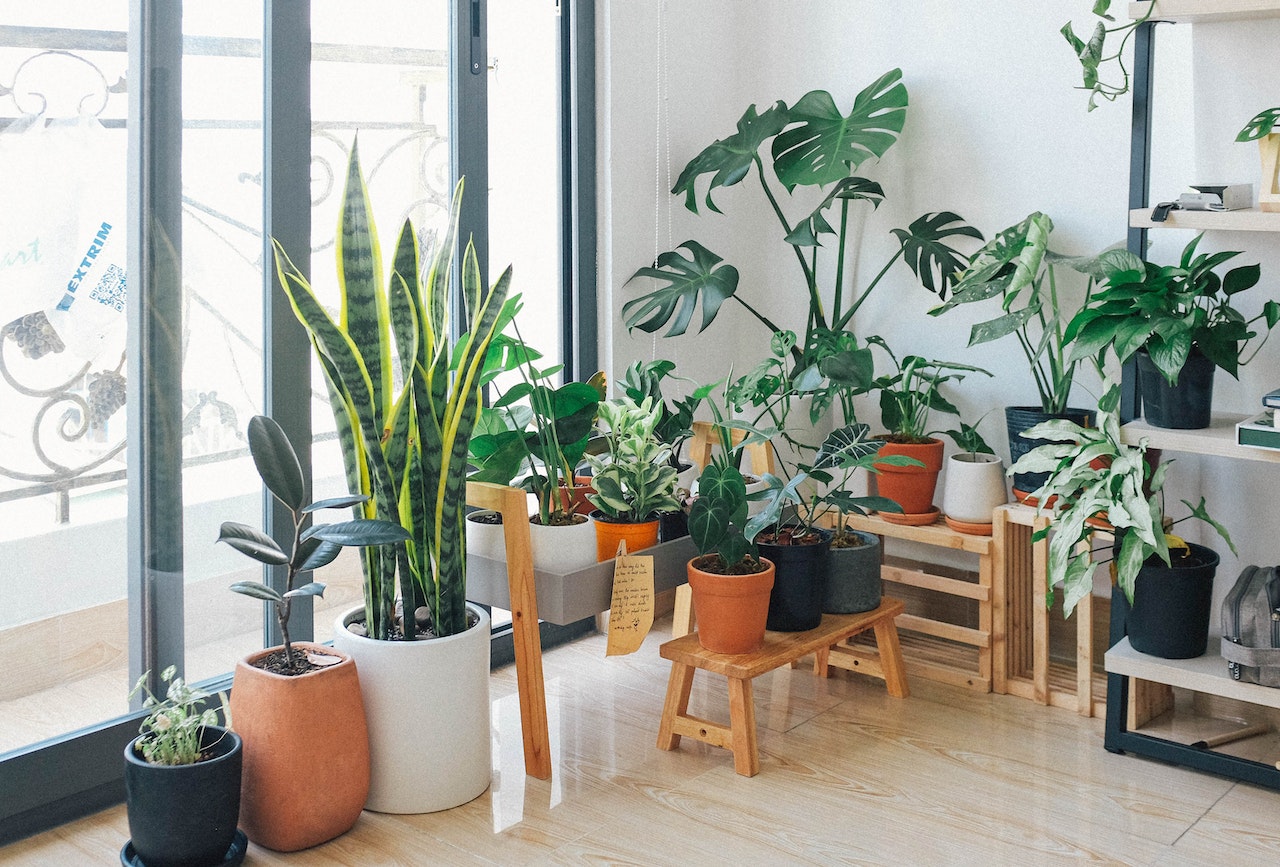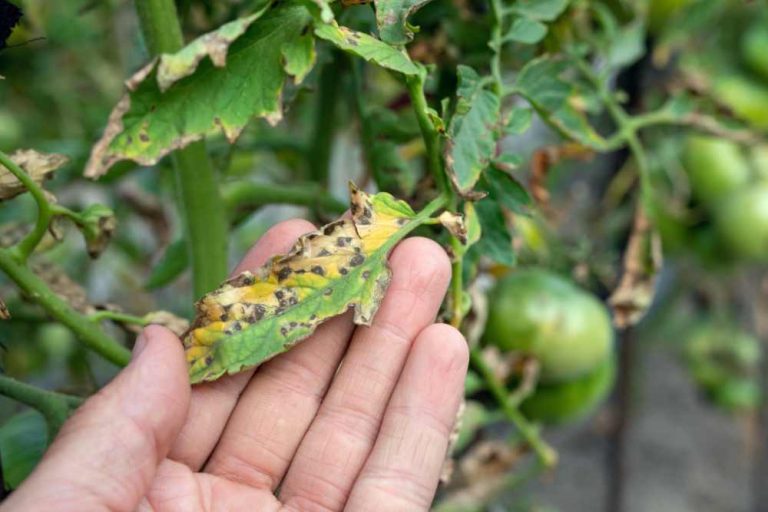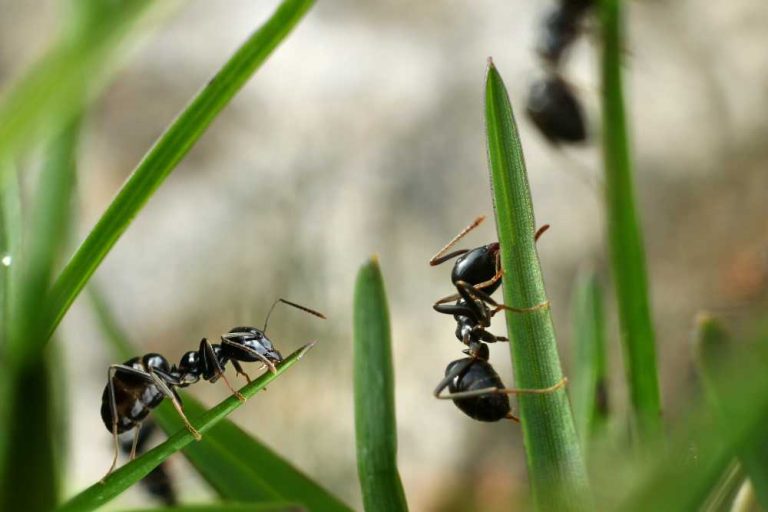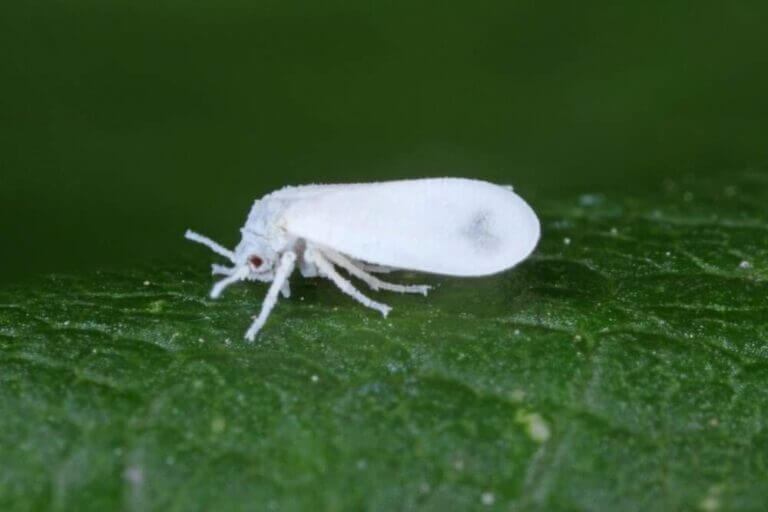12 Common House Plant Diseases: How to Identify and Treat Them
Your home will look lovely and have a touch of nature with houseplants. The harsh reality is that various common houseplant diseases can infect them, changing their beauty unattractive or even killing them. Many people are aware of plant diseases of outdoor plants, however, interior plants are also susceptible to disease.
Here is a list of the most common house plant diseases in case you’re interested in learning more. Remember that excellent preventative gardening measures can help prevent houseplant diseases.
How to Avoid Diseases Of Houseplants
- Only clean, healthy plants should be purchased. This decreases the likelihood of pests and diseases infecting both new and existing plants. When in doubt about a plant’s health, isolate it for a few weeks, take care of it, and observe to see if things get better. This is safer than placing it in a room with other plants and risking infecting them all.
- When watering your plants, establish a routine of pinching off dead flowers and thoroughly inspecting the plants to ensure that they are clean and healthy. If you identify any problems, take care of them right away before they spread throughout the house.
- Make sure to only use clean potting compost and never take cuttings from unhealthy plants.
- Remember that most indoor plants do poorly since they are not given regular nutrition. The majority of individuals can remember to water a plant, but nobody considers the nutrients it needs. A balanced diet will increase your plants’ chances of surviving an infestation or disease. If you overfeed your plants, the compost may turn poisonous, which can stunt or even stop their development.
- After late summer, never feed summer-flowering plants. Because it encourages lush growth that is prone to diseases and bugs just as the plant is preparing to hibernate for the winter.
1. Anthracnose
Anthracnose is a fungal disease that spreads via the soil and infects a variety of plants, including houseplants. Because the spores overwinter on the leaves and branches, this disease is difficult to eliminate outside. When warmer weather arrives, the spores come to life. The disease can spread quickly inside, where it never becomes cold enough to delay or kill the bacterium. That is why you must be watchful.
Symptoms:
- Anthracnose can appear on your plants for a variety of reasons, including reusing contaminated soil, allowing dead plant debris to remain on the soil and improper cultural conditions such as damp soil or overcrowding.
- The yellowing of the leaf tips is a common symptom of anthracnose.
- The yellow regions darken, finally turning brown and withering.
- You may observe that the discoloration spreads around the leaf’s outer edges.
Treatments:
- If your houseplant has anthracnose, remove the affected leaves with sterilized pruning tools and discard them.
- The plant should then be treated with a fungicide formulated for anthracnose and safe for use on the plant type, such as copper. Just keep in mind that not all fungicides are safe to use indoors.
- When it comes to preventing future anthracnose outbreaks, following a few simple guidelines will keep your plants healthy and fungus-free:
- Purchase plants that appear to be healthy from a trusted dealer.
- Reusing potting mixes is not recommended, and only use clean, fresh soil for planting.
- Ensure that there is adequate air circulation around the plant.
- Reduce the humidity in the area around the plant.
- Keep fallen plant debris off the surface of the potting mix.
2. Powdery Mildew

Powdery mildew is an easily identified fungal disease.
Symptoms:
- Affected plants appear to have been sprinkled with powdered sugar.
- Powdery mildew appears as round patches on any part of the plant, however, it is most common on the upper regions of the leaves.
- Powdery mildew prefers a specific combination of shade and warm, dry temperatures.
- It is a fungal disease that appears at random.
Treatments:
- Fungicides are the most effective treatment for powdery mildew disease. Fungicides such as neem oil and lime sulfur should be sprayed on any damaged plants.
- Another more natural option is baking soda. Simply mix 1-quart water and 1 tsp of baking soda.
- Air movement is also crucial, so avoid accumulating garbage around your plants.
- Powdery mildew is best avoided by providing enough sunlight.
3. Root Rot
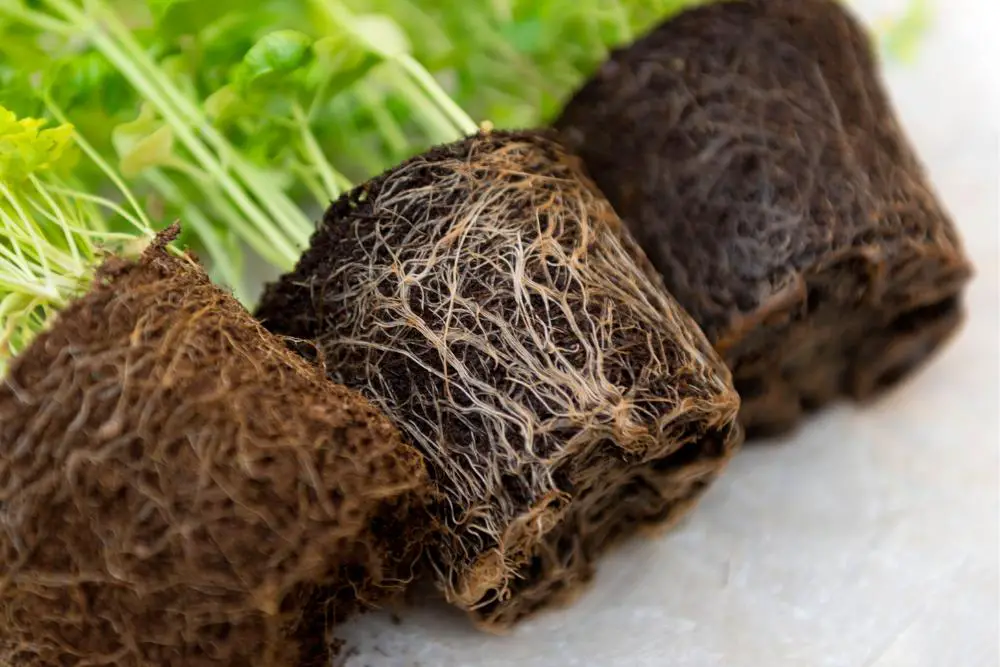
Root rot, like stem and crown rot, is not visible until the latter stages.
Symptoms:
- It affects the roots directly, inflicting havoc beneath the surface.
- If you suspect a houseplant has root rot, gently unpot it and inspect the roots.
- Infected roots become soft, shriveled, and black over time.
- Healthy roots are often light in color and quite firm. Root rot is unfortunately relatively frequent.
- It is a tough fungal disease that prefers warm, moist potting soil.
- Other than that plants are highly susceptible to getting it.
- To thrive, the fungus requires an extremely wet environment, which is generally produced by overwatering or poor drainage.
- When a houseplant develops root rot, it is nearly tough to eradicate.
- You can try to save any remaining healthy roots while eliminating the others.
Treatments:
- You must also use a new, clean pot and fungicide.
- The rot will most likely persist and spread anyway, but your plant may be a lucky survivor.
- It has a very high mortality rate. Recovering plants is quite uncommon. Therefore, it is more important than ever to focus on disease prevention.
- Always make sure your houseplants have well-drained soil and that their pots have drainage holes on the bottom.
- Avoid overwatering your plants as well.
- Instead of overwatering, it is much safer to choose the option of underwatering.
4. Sooty Mold
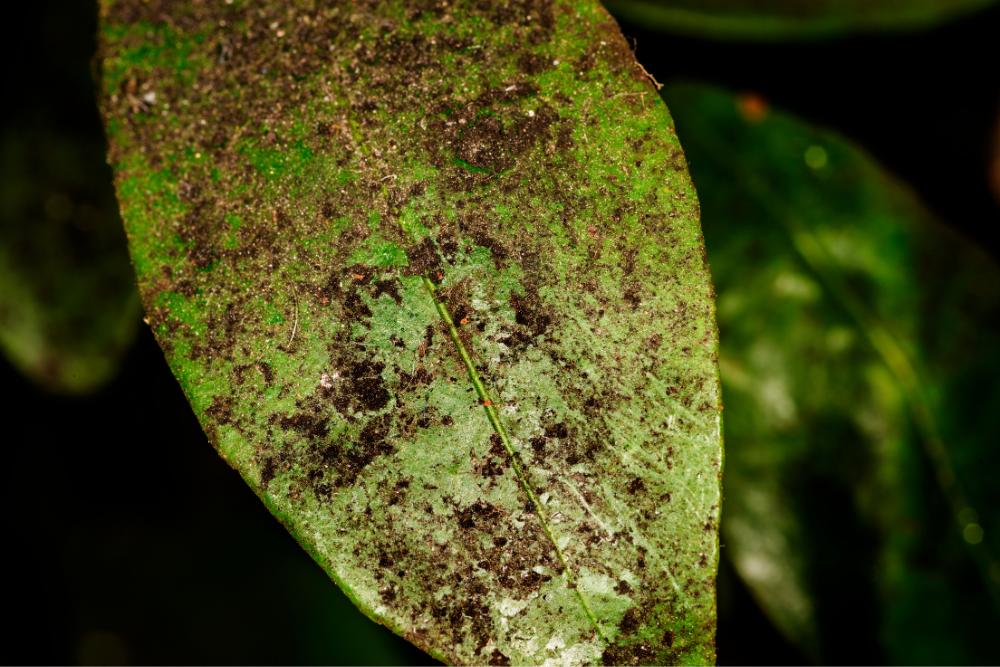
Sooty mold has a distinct appearance and is easy to identify.
Symptoms:
- It has the appearance of soot or ash, as the name implies.
- It turns into a thin black powder.
- While this disease does not directly injure plants, it does disrupt photosynthesis and can be fatal if left untreated.
- Most people find it unattractive, making it doubly unpleasant.
- Pests are the main cause of Sooty Mold. Specifically, the fungal disease grows on the honeydew excretion left behind by pests. Ladybugs and thrips are two of the most common pests.
Treatments:
- You must first get rid of the bugs to remove the sooty mold.
- You can also use fungicides to cure the existing mold and remove blighted leaves.
- Sooty mold sticks to plants stubbornly, but it can be removed with a mixture of 1 TBSP household detergent and 1 gallon of water. Apply it, leave it on for 15 minutes, and then thoroughly rinse. If required, repeat this procedure several times over the next few weeks.
- The easiest approach to avoid sooty mold in houseplants is to keep any pests away. This ought to end the situation.
5. Crown and Stem Rot
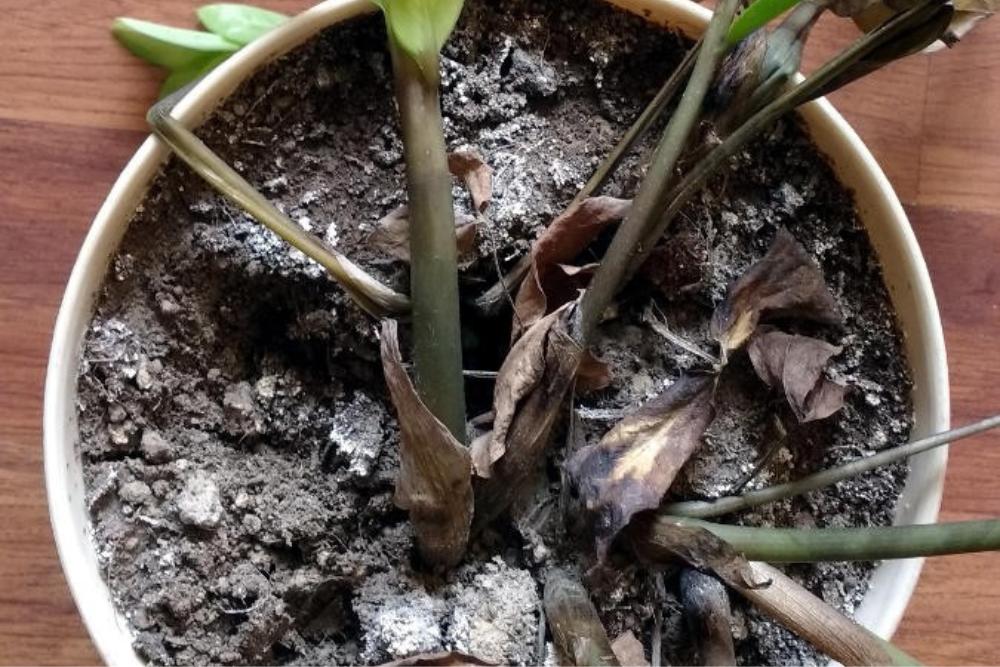
When crown and stem rot symptoms appear, it’s probably too late for the afflicted plant. This fungal disease spreads rapidly and infects the entire plant above the soil and sometimes it is also accompanied by root rot below.
Symptoms:
- Plants suffering from root rot may gradually discolor, turning red, brown, and black.
- This is an indication that the damaged tissue is dying.
- The leaves will wilt and wither as the crown and stem rot spreads.
- The entire plant will die off one by one.
- Crown and stem rot is particularly common in ornamental herbaceous and woody plants. It’s a humidity-loving fungus that thrives in the soil.
- Poorly draining soil is the primary cause of crown and stems rot.
- Nitrogen deficiencies can make the plant more susceptible to crown and stem rot.
- Rot usually infects plants through any wounds they may have from pruning, repotting or whatever else. With this disease, your plant’s chances of recovery are limited. If you’re intent on trying, begin by removing any visible diseased plant pieces.
Treatments:
- Prevention of crown and stem rot is maybe more important than prevention of any other disease for the survival of your plants.
- The most crucial step is to make sure the soil drains properly.
- Next, instead of getting the leaves or stems wet, try watering the soil directly.
- Finally, before pruning, properly clean your instruments, and maintain your plants vigorously with nutrient-rich soil and fertilizer.
6. Cercospora
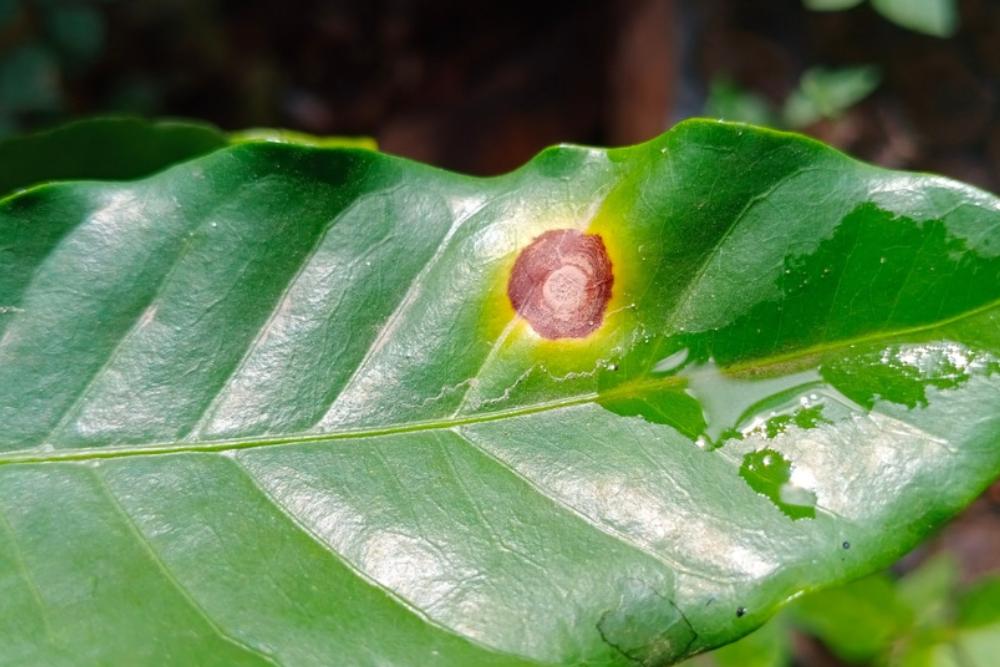
Symptoms:
- Cercospora may infect your houseplants if you observe yellow patches on the underside of the leaves that gradually make their way to the top.
- The yellow spots become larger over time and become sunken into the leaves, giving them a purplish-brown appearance.
- With infections close to the node, Cercospora finally causes leaf loss.
- Poor air circulation and excessive moisture on the leaves are common causes of this disease.
Treatments:
- Cercospora has the disadvantage of not being treatable with fungicides.
- Other ways must be used to control it before it kills your entire plant.
- To begin, remove any diseased leaves or flowers.
- If you can’t seem to get ahead of the problem, consider removing the plant from its pot and rinsing the soil away from the roots.
- Repot with fresh, clean soil after cleaning the pot with a 1:10 bleach-to-water mixture.
7. Gray Mold
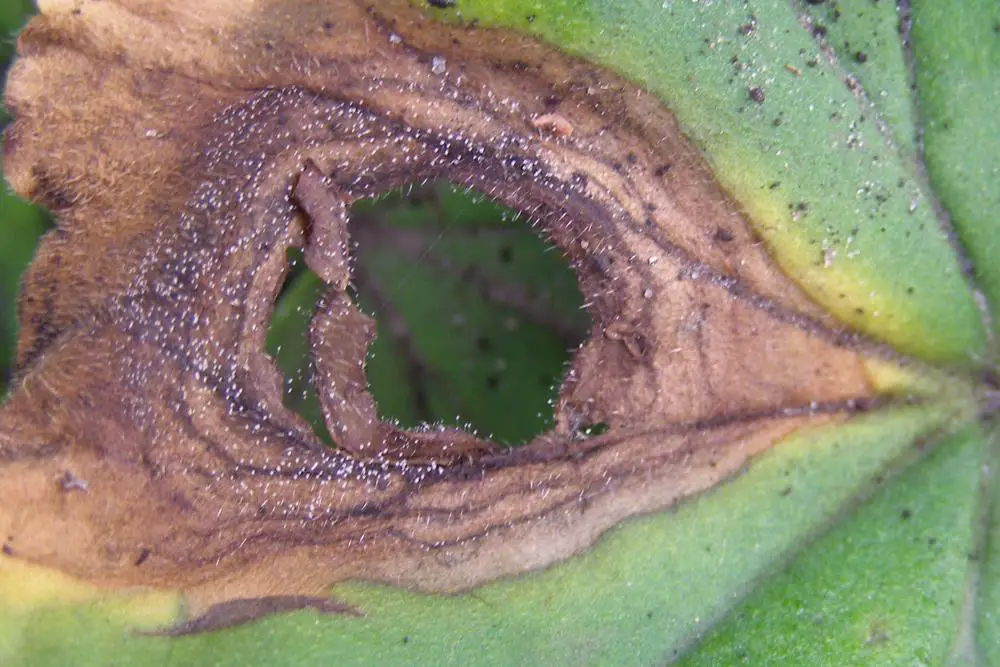
Botrytis blight, sometimes known as gray mold, is one of the most frequent houseplant diseases. It is a deadly fungal disease that quickly kills the affected plants.
Symptoms:
- Gray mold thrives on dead plant waste, therefore it spreads quickly if not cleaned up.
- Furthermore, the spores disperse into the air, infecting other houseplants nearby.
- Water dripping onto the plant also transfers spores to the leaf.
- The disease prefers to attack flowering plants, killing the flowers before they open.
- It also causes grayish, bull’s eye patterns on the older leaves, as well as stem cankers.
- You’ll also notice a thick layer of gray mold covering the dead plant debris.
Treatments:
- Gray mold treatment is achievable, especially with the right environmental conditions.
- It’s critical to cure it as soon as possible to prevent it from spreading to other plants in your home.
- Plants should be pruned to increase air circulation, and a fan should be used in the room until the disease is under control.
- Consider adding houseplant mulch and watering the base of your plants.
- Fungicides for indoor use can be utilized in severe cases.
8. Plant Viruses
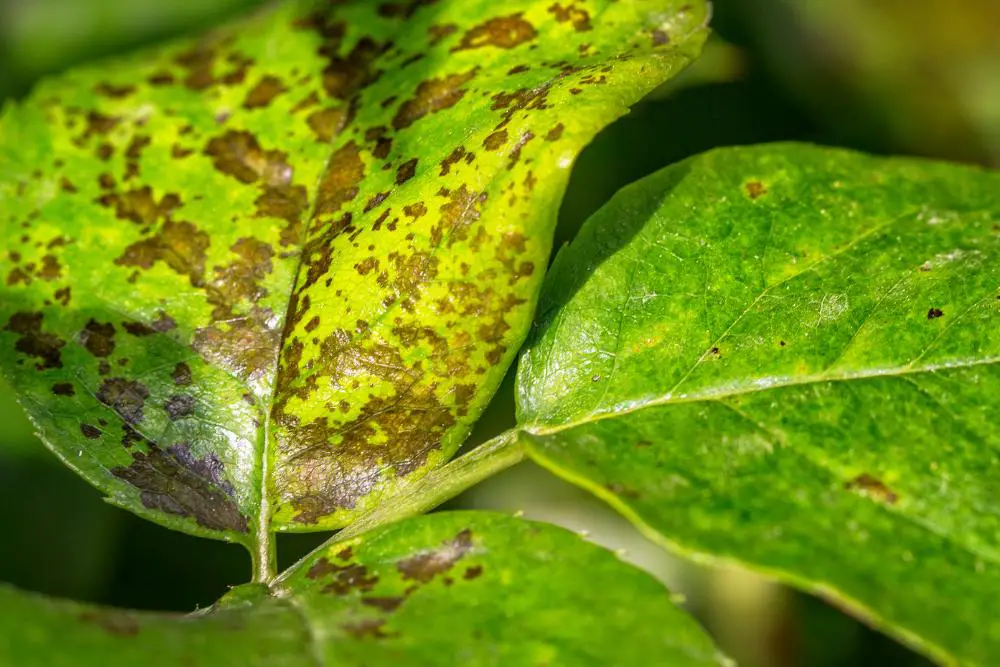
Symptoms:
- A variety of symptoms can indicate that your houseplant is infected with a virus. The following are the symptoms of a viral infection:
- Plant viruses typically appear as leaf yellowing.
- This will frequently show as blotches and stripes, as well as floral and fruit abnormalities.
- Keep a watch out for growth stunting and deformation as well (misshapen fruits and leaves).
- On the other hand, virus symptoms in plants, are not usually obvious.
- Typically, insects are the carriers. Leaf hoppers, whiteflies, thrips, aphids, and mites are examples of pests.
- Plants are naturally virus-resistant. Something must expose them to the virus for them to contract it. Pests are the most significant reason.
Treatments:
- As there are no treatments that will cure a plant that has been infected with a virus, your only alternative is to discard the plant and start over.
- If you notice a pest problem, you should handle it as quickly as possible to avoid the bugs infecting the houseplant with a viral disease.
- Infected plants should be isolated or destroyed, and should never be mulched or composted.
- Viruses are very contagious and incredibly difficult to eradicate.
- If you’re determined to save an affected plant, quarantining it and treating the pests can be effective.
- Plant viruses are so difficult to eradicate that protection is more vital than ever.
- Flowers with unusual colors and deformed shapes.
- Foliage with necrotic lesions or yellow rings. Abnormal mosaic and mottling patterns in dark and light green. Leaves with streaking, light and dark green or yellow spots.
- Leaf growth has been distorted. Plant growth has been slowed.
- Always buy healthy-looking houseplants from trusted sources.
- Do not utilize virus-infected houseplant parts as propagation material. Even if the area appears to be disease-free, it is infected with the virus.
- When trimming a houseplant, always use sterilized pruning tool blades.
- It is necessary to clean the blades with rubbing alcohol. If you smoke or use tobacco, always wash your hands before touching houseplants.
9. White Mold
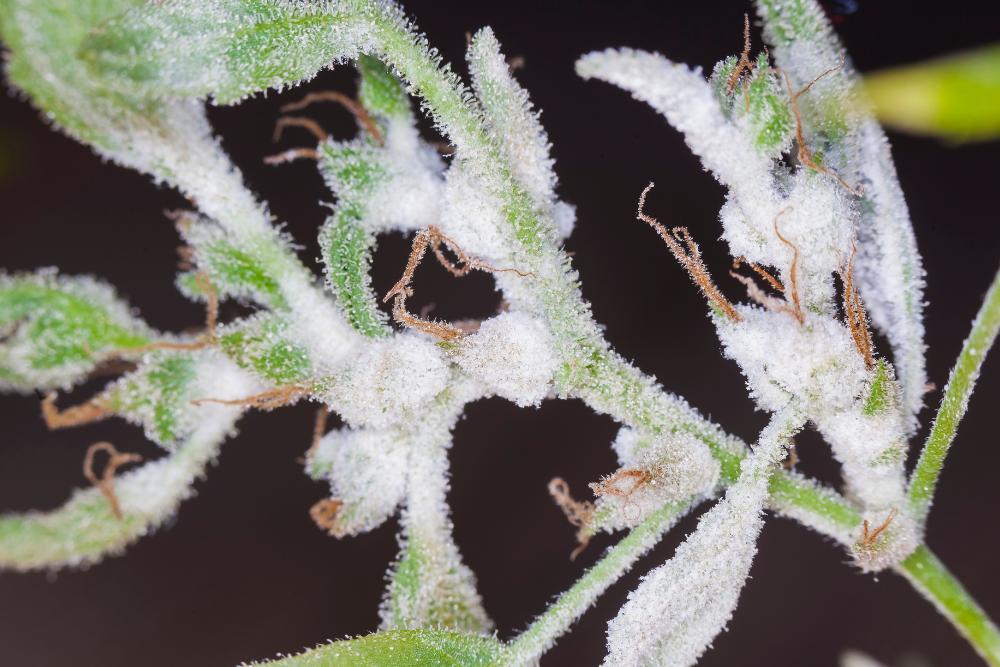
The white mold that develops on top of your potting mix is brought on by the saprophytic fungus. Although the fungus won’t harm a plant growing in the soil, it is an indicator that the environment for growth isn’t ideal and may eventually lead to more severe disease issues and plant mortality. Poor maintenance causes the saprophytic fungus to thrive, including overwatering, growing in potting soil that has already been contaminated, and having inappropriate drainage because the container lacks drain holes or the soil is too dense.
Symptoms:
- A white, crusty-looking material that covers the top of the potting mix is an easy way to recognize saprophytic fungus as a disease.
- The fungus has no impact on the plant’s development or health unless the plant also has another disease.
Treatments:
- You may remove the moldy material off the top of the soil with ease if the white mold is making your entire plant seem unpleasant.
- However, some cultural parameters need to be changed to stop future outbreaks of the fungus and another, potentially more dangerous disease that might infect the plant.
- Before adding extra water, give the soil time to dry up.
- Don’t overwater. Applying more water when the top inch or two of the soil gets dry is a good general rule for watering. To prevent the soil from being moist, use containers with bottom drain holes.
- When recycling a container, make sure to thoroughly wash it with a bleach solution to get rid of any fungus or bacteria. Grow the plant in new, lightweight potting soil that drains well.
10. Bacterial Leaf Spot
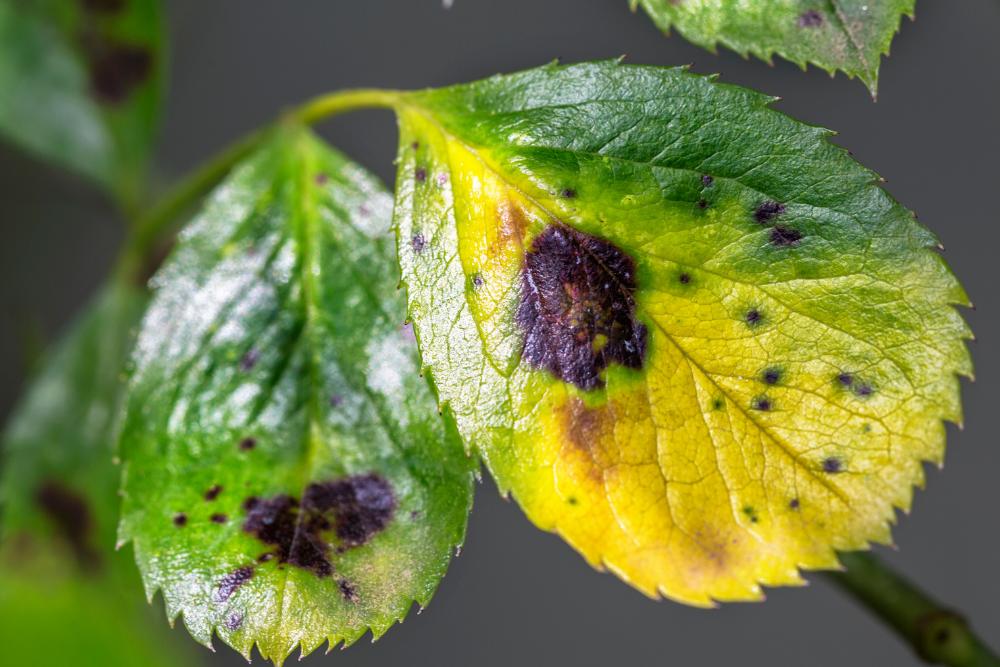
Bacterial leaf spots in houseplants can be fatal, depending on the species. The disease is caused by numerous bacteria types, and it can be localized, for example, only harming foliage, or it can become systemic and more serious, spreading throughout the stems and leaves. Bacteria that cause bacterial leaf spots on houseplants thrive in cool, moist environments. Inadequate watering techniques and overpopulation can contribute to the problem. Reusing soil that had leaf-spotting bacteria can also infect a healthy plant.
Symptoms:
- Bacteria leaf spots appear on leaves as black, water-soaked regions with a yellow circular pattern surrounding them.
- As the disease spreads, the water-soaked spots merge and cover huge portions of the leaf. If the leaf spots are only on the leaves, remain localized, and do not spread to the stems, the plant can most likely be survived.
- If the dark, water-soaked regions cover the stems and leaves, and the affected portions become mushy and eventually collapse, the bacterium is systemic and infects the entire plant, which is a more significant concern.
Treatments:
- If the bacterial leaf spots are systemic and damage the entire plant, the only option is to remove the entire plant as well as the soil in which it was developing.
- There is no remedy for the disease, so it is advisable to destroy the used soil rather than risk infecting a fresh healthy plant.
- If only a few leaves were contaminated and the bacteria stayed localized, you can trim and discard those leaves. Place your houseplants in a way that allows for optimal air circulation. Reduce the humidity.
- You can water early in the morning to allow the leaves to dry before evening. Don’t splash water on the plants.
- Keep the soil’s surface free of falling plant debris. Do not re-use previously infected soil.
11. Fungal Spots
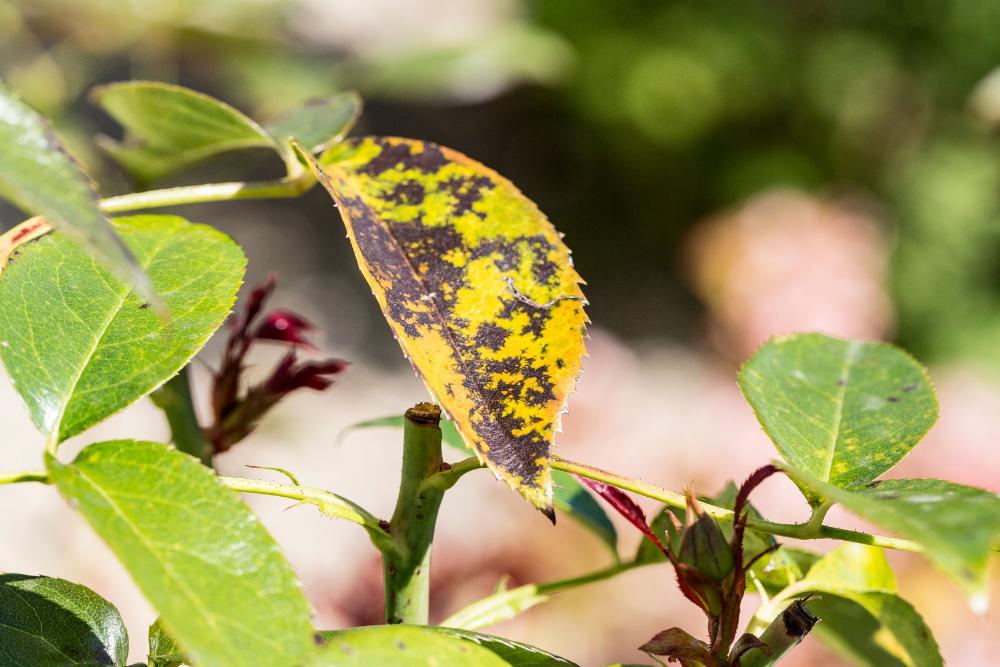
Fungal spots are another prevalent houseplant disease in indoor plants. Fungal spots are caused by a variety of fungi.
Symptoms:
- This fungal infection can generate patches on the leaves of plants. Circular patches ranging from reddish-brown to black or lesions that run together are often noticeable.
- It can result in big, irregularly formed lesions. In some situations, the entire leaf is blighted by infection.
- If the infection affects the newest leaves, it destroys the infection’s growing point. Extensive leaf drop is observed in cases of severe infection. A situation like this might cause dieback in the afflicted plant or shrub.
Treatments:
- You can remove the infected leaves from the plant by picking them up.
- Allow lots of air circulation to keep the plant healthy.
- If you have a lot of plants close together, make sure to leave enough space between them. This guarantees that all of the plants have enough air to stay healthy.
12. Nutrient Deficiency
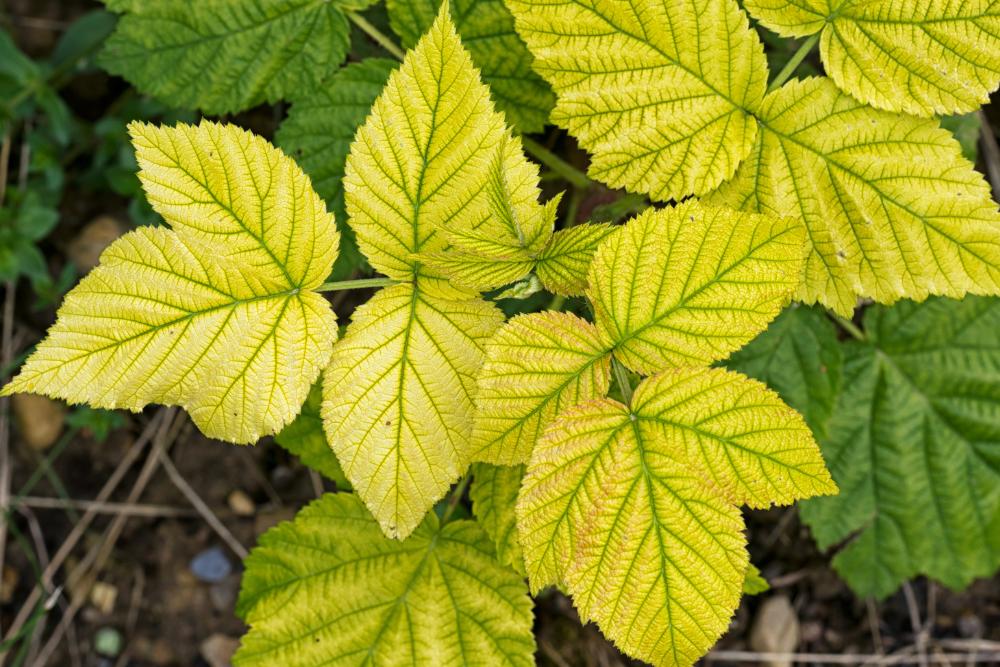
Symptoms:
- Yellow leaves and poor blossoming are common symptoms of nutritional deficiency.
- Nitrogen deficiency can cause leaf yellowing or browning because nitrogen is a big part of what keeps plants green and leafy.
- A potassium deficiency is frequently indicated by yellow or purple leaf tints and poor flowering.
- A plant may be magnesium deficient if it grows slowly and has dull yellow leaves.
- The leaves may also begin to turn red and fall off.
- There are numerous reasons for nutrient shortage in plants, the most common of which are too dry soil, sandy soil, and inappropriate pH such as very acidic or alkaline soil.
- Another recognized reason is the overuse of high-potassium fertilizers though the proper amount is still necessary.
Treatments:
- Fertilizer might help your plants recover quickly in the short term. There are numerous forms of fertilizer, and you must determine which is required.
- Multiple fertilizers, including nitrogen-rich and potassium-rich fertilizers, are sometimes required.
- You can also keep your plants nourished and happy by providing them with a good dosage of compost and organic materials regularly.
- You may prevent a nutrient deficit in your plants by ensuring that they have suitable soil, that they are irrigated properly, and that the soil has the correct pH.
- Your plants will almost certainly recover if you take care of them.
- 20+ Chic Boho Bedroom Ideas for a Cozy and Stylish Retreat - June 20, 2024
- 12+ Modern Boho Living Room Ideas to Create a Unique Oasis - June 10, 2024
- 10 Stunning Canopy Bed Ideas for a Dreamy Escape - May 16, 2024

